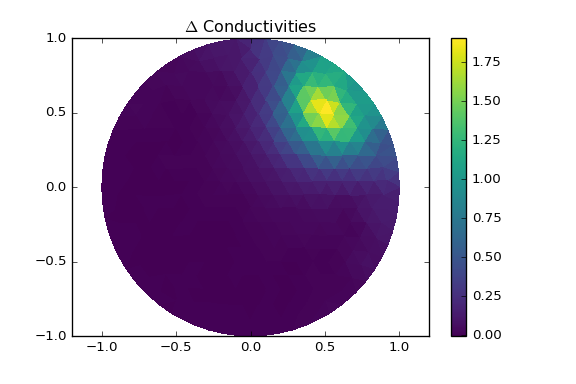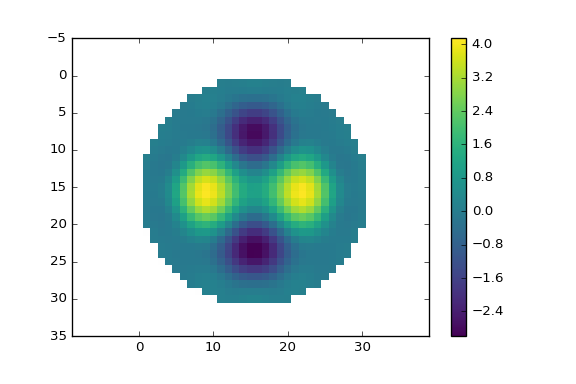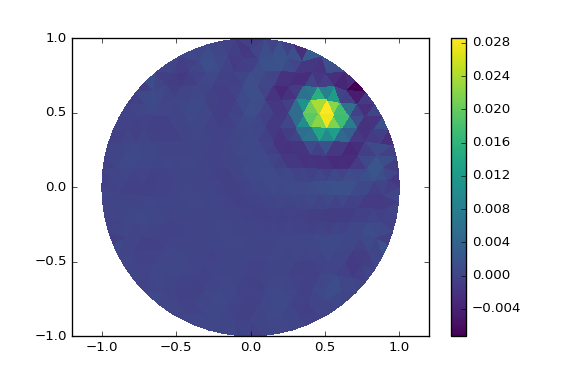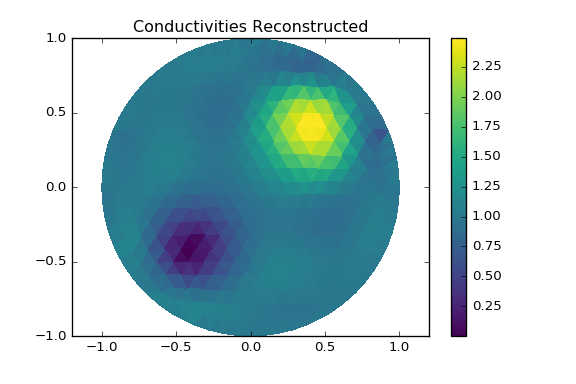Thank you for the interest in pyEIT!
pyEIT is a python-based, open-source framework of Electrical Impedance Tomography (EIT).
The design priciples of pyEIT are modularity, minimalism, extensibility and OOP!
| Packages | Optional | Note |
|---|---|---|
| numpy | tested with numpy-1.13.3 |
|
| scipy | tested with scipy-0.19.1 |
|
| matplotlib | tested with matplotlib-2.1.0 |
|
| vispy | Optional | tested with vispy-git |
| pandas | Optional | tested with pandas-0.20.3 |
| xarray | Optional | for large data analysis |
| distmesh | Optional | A build-in module is provided in pyEIT |
| meshpy | Optional | An alternate way for creating 2D/3D meshes |
Q1, Why you choose vispy for 3D visualization?
pyEIT uses vispy for visualizing 3D meshes (tetrahedron), and this module is not required if you are using 2D EIT only. vispy has minimal system dependencies and it is purely python. All you need is a decent graphical card with OpenGL support. It supports fast rendering, which I think is more superior to vtk or mayavi and it also has decent support for python 3. Please go to the website vispy.org or github repository vispy.github for more details. Installation of vispy is simple by typing python setup.py install. We are also considering mayavi for a future version of pyEIT.
Q2, How to contribute ?
Interested users can contribute (create a PR! any type of improvement is welcome) FEM forward simulations, inverse solving (EIT imaging) algorithms as well as their models. We will setup a wiki page dedicated to this topic.
Q3, Fast setup.
Anaconda from continuum is highly recommended for this package. PyEIT is purely python and has minimal dependencies.
- 2D forward and inverse computing of EIT
- Reconstruction algorithms : Gauss-Newton solver (JAC), Back-projection (BP), 2D GREIT
- 2D/3D visualization!
- Add support for 3D forward and inverse computing
- 3D mesh generation and visualization
- Generate complex shape using distmesh
- Generate 3D phantoms
- Complete electrode model (CEM) support
pyEIT is purely python based, it can be installed and run without any difficulty.
$ python setup.py build
$ python setup.py install
User can track the git version of pyEIT, and using it locally by setting the PYTHONPATH variable. This method is recommended.
export PYTHONPATH=/path/to/pyEIT
Under windows, you may set PYTHONPATH as a system wide environment. If you are using spyder, or pyCharm, you may also set PYTHONPATH locally per project in the IDE, which is more convenient. Please refer to a specific tool for detailed information.
Enter the demo folder, pick one demo and run!
Note: the following images may be outdated due to that the parameters of a EIT algorithm may be changed in different versions of pyEIT. And it is there in the code, so just run the demo.
Using demo/demo_dynamic_bp.py
Using demo/demo_dynamic_greit.py
Using demo/demo_dynamic_jac.py
Using demo/demo_static_jac.py
Using demo/demo_forward3d.py
Using demo/demo_dynamic_jac3d.py
Notes:
- 3D visualization plotted using
vispycan be adjusted using mouse wheels interactively. Seeking a perfect visualization mode, transparency or opaque, is in fact an individual taste. User can also trymayaviandvtkfor the visualization purpose using the unified 3D meshing structure. - Solving the inverse problem of 3D EIT, requires the electrodes to be placed at multiple altitude (z-axis) in order to have a (better) z-resolution. This should be done carefully, as adding extra z-belt introduces more stimulation patterns, which in turn adds to the computational loads.
Give pyEIT a star, fork this project and commit a pull request (PR) !
If you find pyEIT useful, please cite our work!
@inproceedings{liu2016pyeit,
title={pyEIT: a python based, open source framework for EIT},
author={Liu, Benyuan and Yang, Bin and Xu, Canhua and Xia, Junying and Dong, Xiuzhen and Fu, Feng},
booktitle={17th International Conference on Electrical Impedance Tomography},
pages={139},
year={2016}
}



